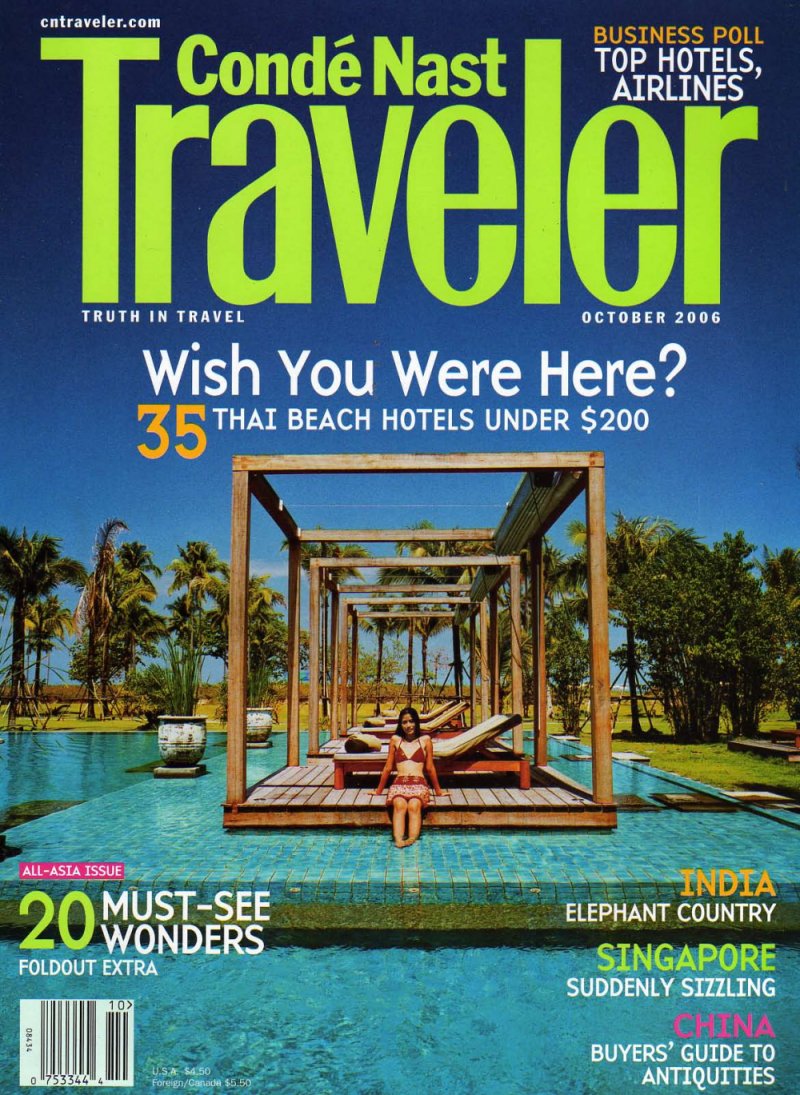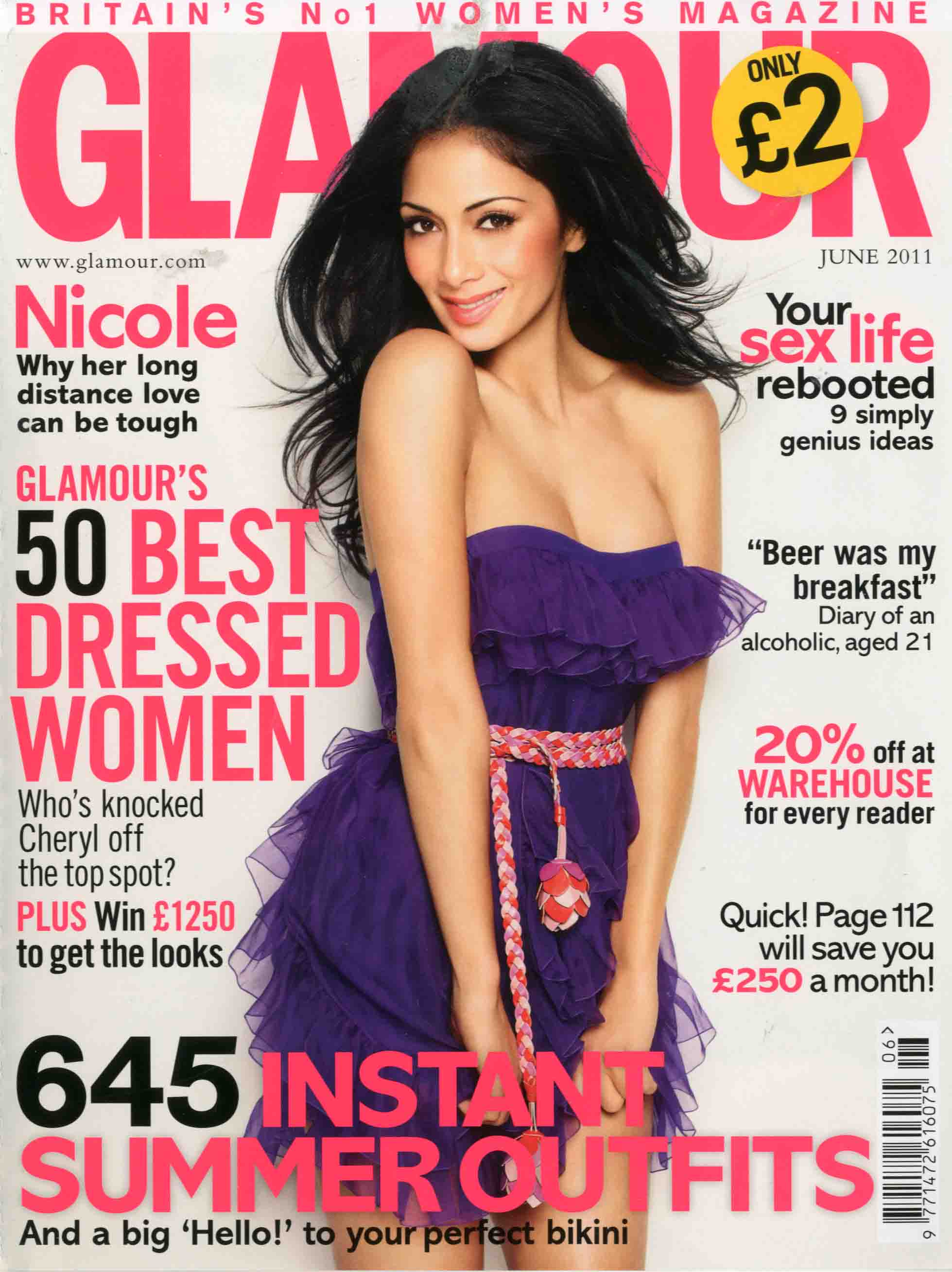MAGAZINE INDUSTRY: MAGAZINE ANALYSIS
VOGUE is a fashion and lifestyle magazine that is published monthly in 12 different national and region, editions by Condé Nast.
Masthead
The name of the magazine VOGUE is large and bold on the magazine page, it is the first thing the audiences notice. Although the colour of the Logo is bronze, it stands out by the shadow behind the text, there is also a contrast between the background and the logo. The masthead allows the reader to recognise the magazine. The typography of the masthead is serif as it is very formal, the colour is bronze/gold therefore it creates a feeling of elegant and clam.
The picture of Beyoncé overlaps the masthead, it is suggesting that Vogue is an extremely successful magazine, people will recognise the logo right away even part of it is covered.
Strap lines, Cover lines
The strap line of Vogue magazine -
For the overwhelming minority. If it wasn't in VOGUE, it wasn't in vogue. Most of the famous and popular magazines do not put their strap lines (Slogans) on their cover page because they are already well known.
The cover lines use enticing sentences which Vogue have cleverly picked out to interest the readers. The cover lines act as a summary of what is in the magazine. Such as
'Just B Beyoncé and the art of global domination.'
'Fall Romance 832 Pages of wonderful looks'
Forces of fashion , the rule-breakers defining the way we dress now'
Style
The style of this magazine cover suggests that their product is in high quality and expensive. The reason is that they used Beyoncé as their front cover model, and she is a very famous celebrity that most people knows and loves. Also, Beyoncé is presented as the 'Queen' because many people love her songs and her style, lots of people admire her.
Image
The strong central image of this magazine cover is the model - Beyoncé. As Beyoncé is a very famous celebrity, she could bring out a very special image to the magazine. The way she looks at the camera is very fierce, her wet hair also represents calm and classy, this is one of the most important methods to attract the audiences. Her pose and her dress are elegant and show the beauty of a woman, and of course, most of the females want to look like her, so they would buy the magazine and follow her fashion trends.
Production Process
1. Create a production schedule
In the schedule, it should include, deadlines for when each story must be submitted to the editors, ample time for proofreading, a design schedule, enough time for editorial board to look over the magazine and to add comments, printing deadline and distribution date.
2. Create a content plan
Creating a content plan includes the front and back cover. This helps to plan the content of a magazine issue and to monitor the production process. Making sure that the plan is confirmed by all members of the editorial board. This part if the process might take more time.
3. Create a detailed plan for each story
What is the challenge it will address to your audience?
They have to consider what type of article will be the best fit for the audience. For creating a modular content, the audiences are constantly bombarded with the information, they tend to not read something that is long and unending text, so the editors has to make ways to make the content as visually appealing as possible. For creating a design mock-up, this helps to communicate the layout details with the authors.
4. Proofread and edit stories
A headline is the most appealing to a magazine cover. It has to lead back to the magazine's content and theme.
Lead is an introduction to a story or an article, it should be short and fulfill two criteria, attracting a reader's attention, and telling them should they follow.
Body, it is to consider rather it's readable, does it make sense, does it have subheads to break up the text for clarity and are they using effective pull quotes.
For pictures, they have to make sure it is suitable for the magazine formats, for example, prints and images should be at least 300 dpi.
5. Design
The design has to make sure that it is logical and works with the overall design of the magazine as a whole. While putting together a magazine, print every page and reduce each one to about 40 percent of its final size. Hanging them on the walls, whiteboards and check, look, compare, and make nescessay changes.
Meaning of connotation:
an idea or a feeling which a word invokes for a person, and in addition to its literal or primary meaning.
Meaning of denotation:
The literal or primary meaning of a word, in contrast to the feelings or ideas which the word suggests.
History of Vogue magazine
- 1892 -
Vogue founded by Arthur Baldwin Turnure. Weekly publication of Vogue was intended for New York's elite residents. Featured reviews of plays, books and music. Rarely mentioned fashion - aside from advising what to wear elite events.
- 1909 -
Vogue is taken over by Conde Nast. Transformed Vogue into a women's high-fashion magazine. Encouraged Vogue's covers to be designed by the most talented illustrators and photographers.
- 1916 -
Conde Nast publishes British and French editions of Vogue.
- 1988 -
Anna Wintour becomes Editor-In-Chief at American Vogue. Anna chose to publish both political and cultural articles in Vogue as well as fashion.
- 2001 -
Anna Wintour produces the first issue of Teen Vogue.
- 2005 -
First men's edition of Vogue is produced.
- 2009 -
Documentary 'The September Issue' is released which gives a behind the scene insight into the making of Vogue and a personal insight into Anna Wintour. Described as world's most influential fashion magazine.
About Condé Nast
 Editorial
Editorial
Editorial excellence is the hallmark of Condé Nast, connecting our consumers to their desires, behaviors, life choices and passions. Each brand includes several editorial departments: Features, Fashion, Travel, Beauty, Design, Entertainment, Art and Photo.
Advertising
Condé Nast employs top sellers and marketers who create integrated programs that connect advertisers with influential consumers through sophisticated research tools and marketing initiatives. Each brand has an advertising department comprised of Sales, Promotions, Merchandising and Marketing.
Corporate
Condé Nast's corporate departments work to support our company's mission to create, promote, market and sell our brands. Our corporate departments include: Ad Operations, Consumer Marketing, Corporate Communications, Editorial Assets and Rights, Editorial Development Group, Finance, Human Resources, Licensing, Market Research, Office Services, Planning and Strategy, and Strategic Sourcing.
Technology
Condé Nast's Technology departments build the platforms and infrastructure to connect our brands to their audiences. Our technology departments include: Engineering/Design, Project/Product Development, Enterprise Applications, Network/Systems Engineering, and Client Services/Support.
Entertainment
Condé Nast Entertainment (CNÉ) is a division of Condé Nast that focuses on the development, production and distribution of original television, feature film and digital video offerings based on the company’s iconic media brands. Our Entertainment departments include: Creative, Product Design, Digital Operations, Engineering, Marketing, Production and Sales.
"For the overwhelming minority. If it wasn't in VOGUE, it wasn't in vogue."






































